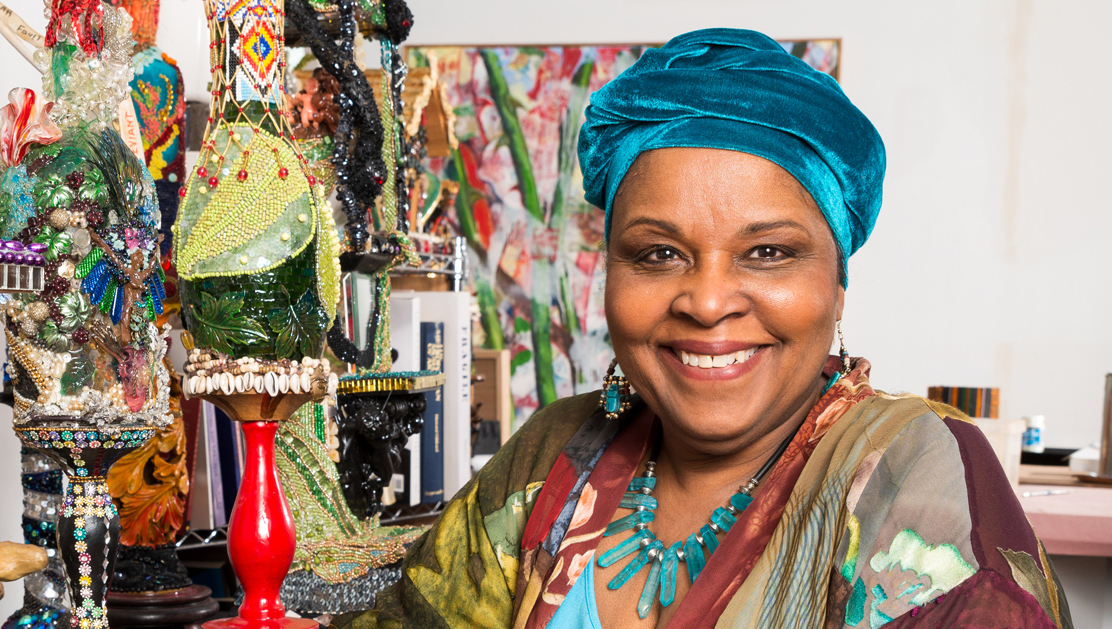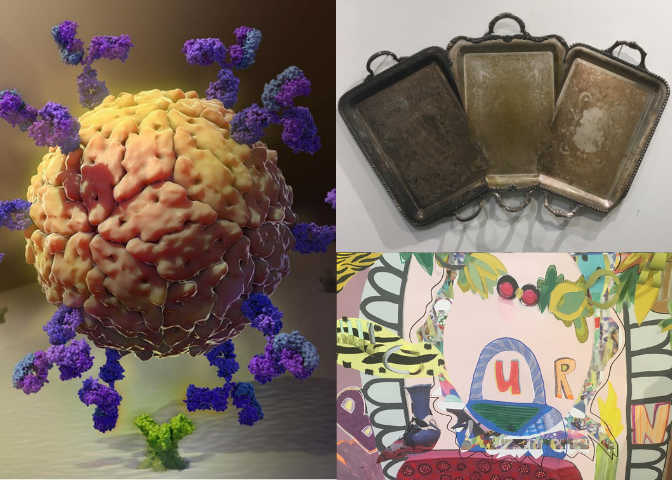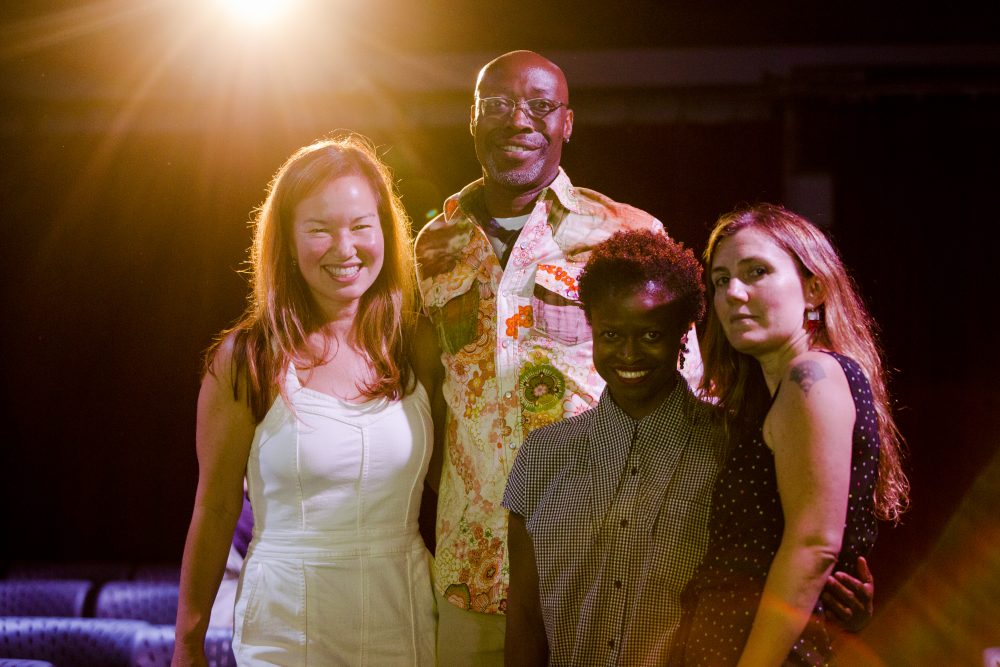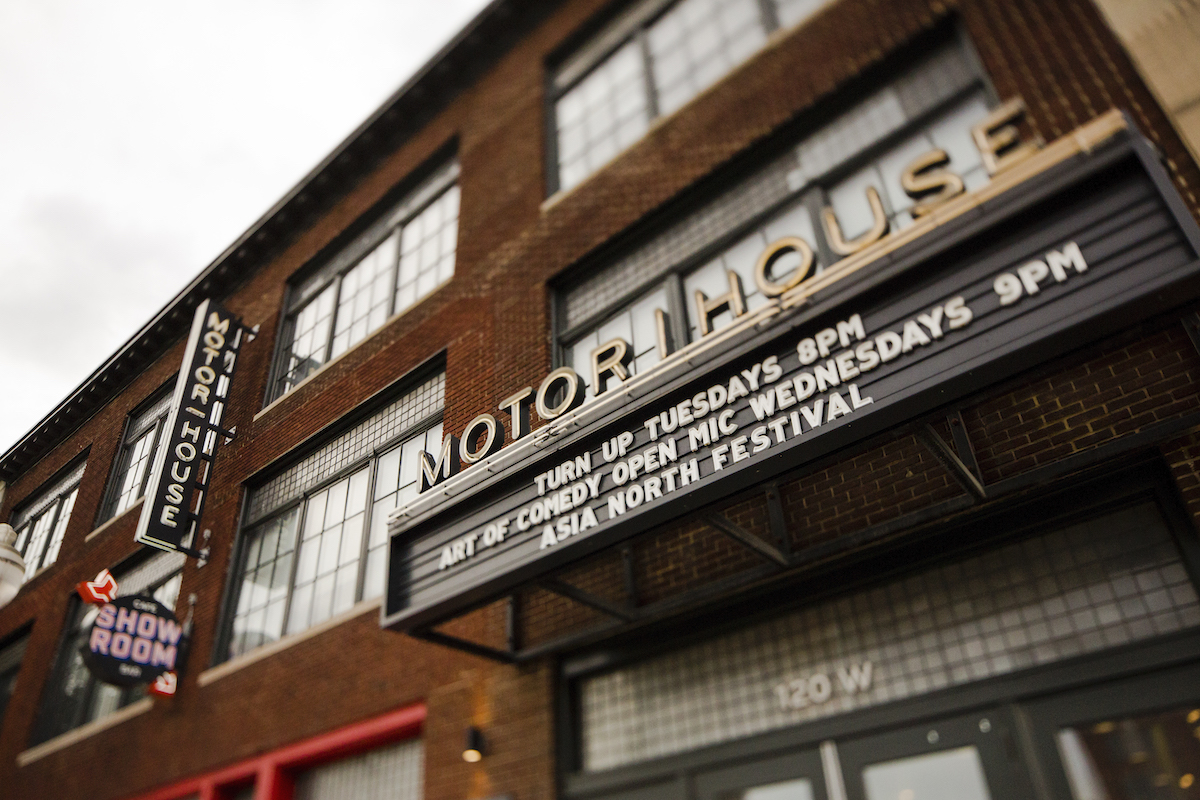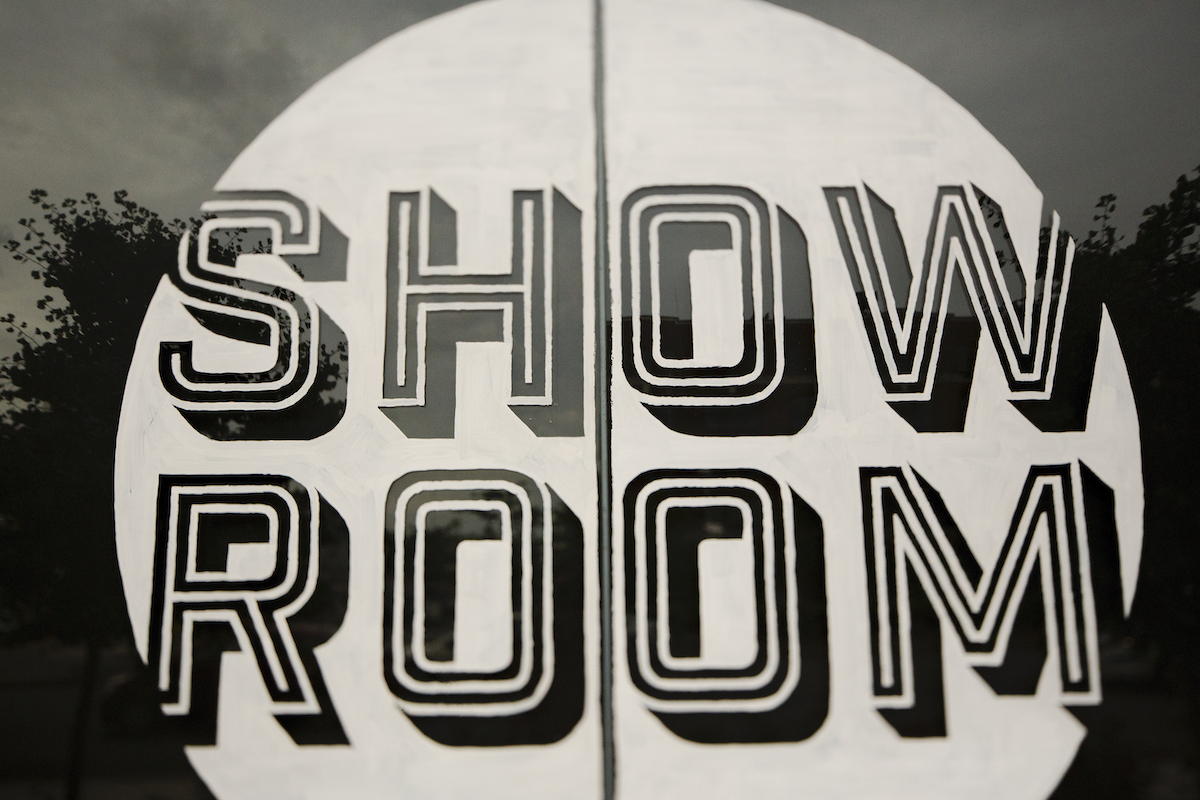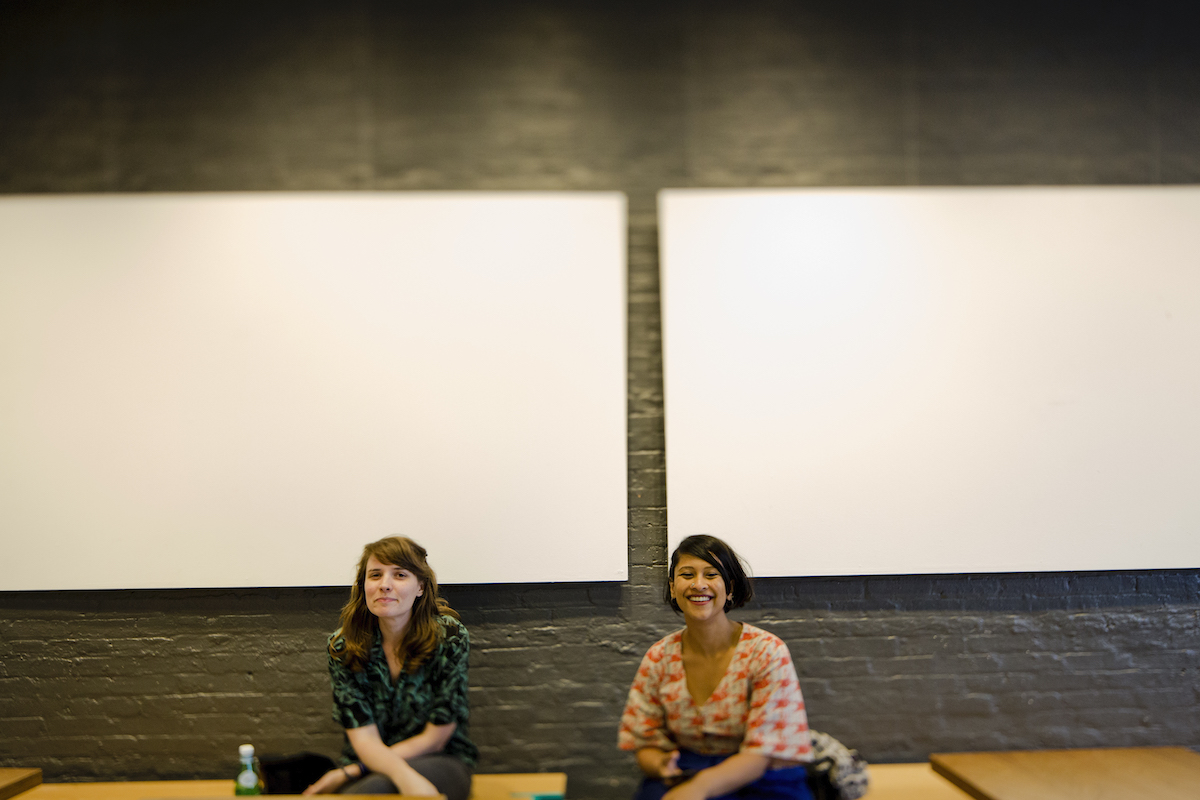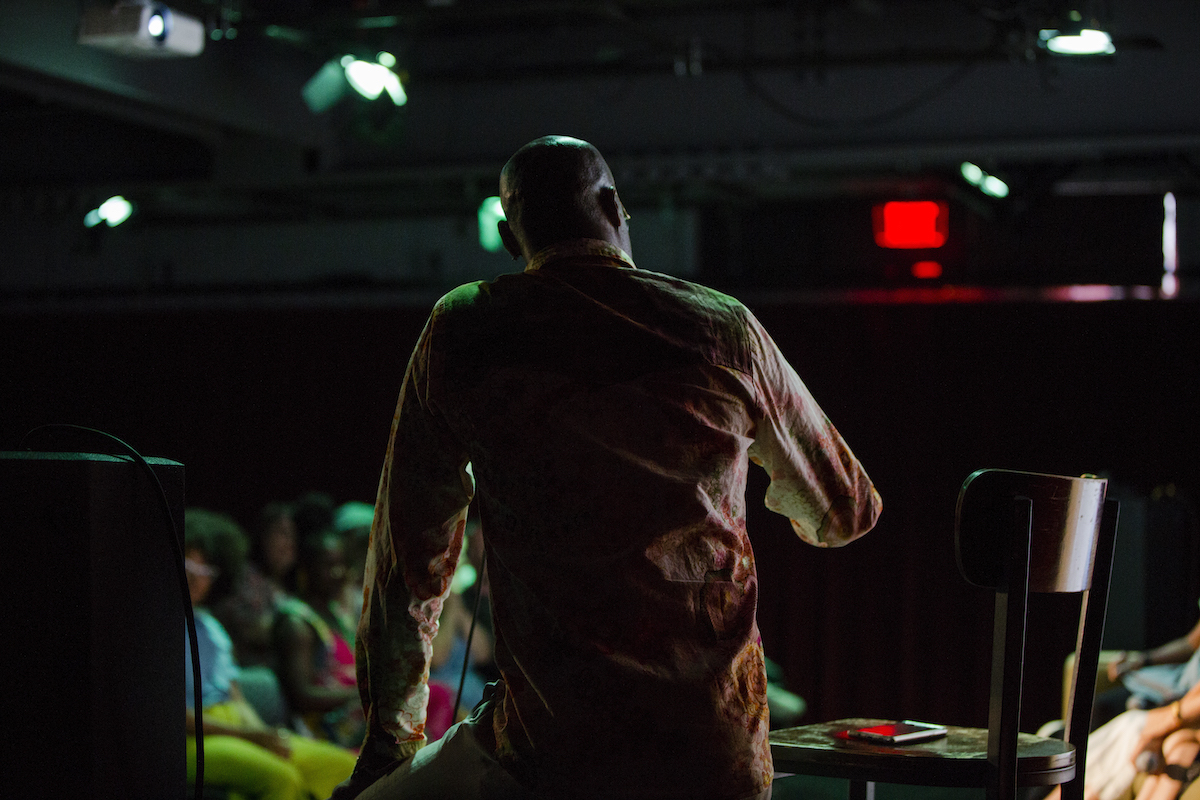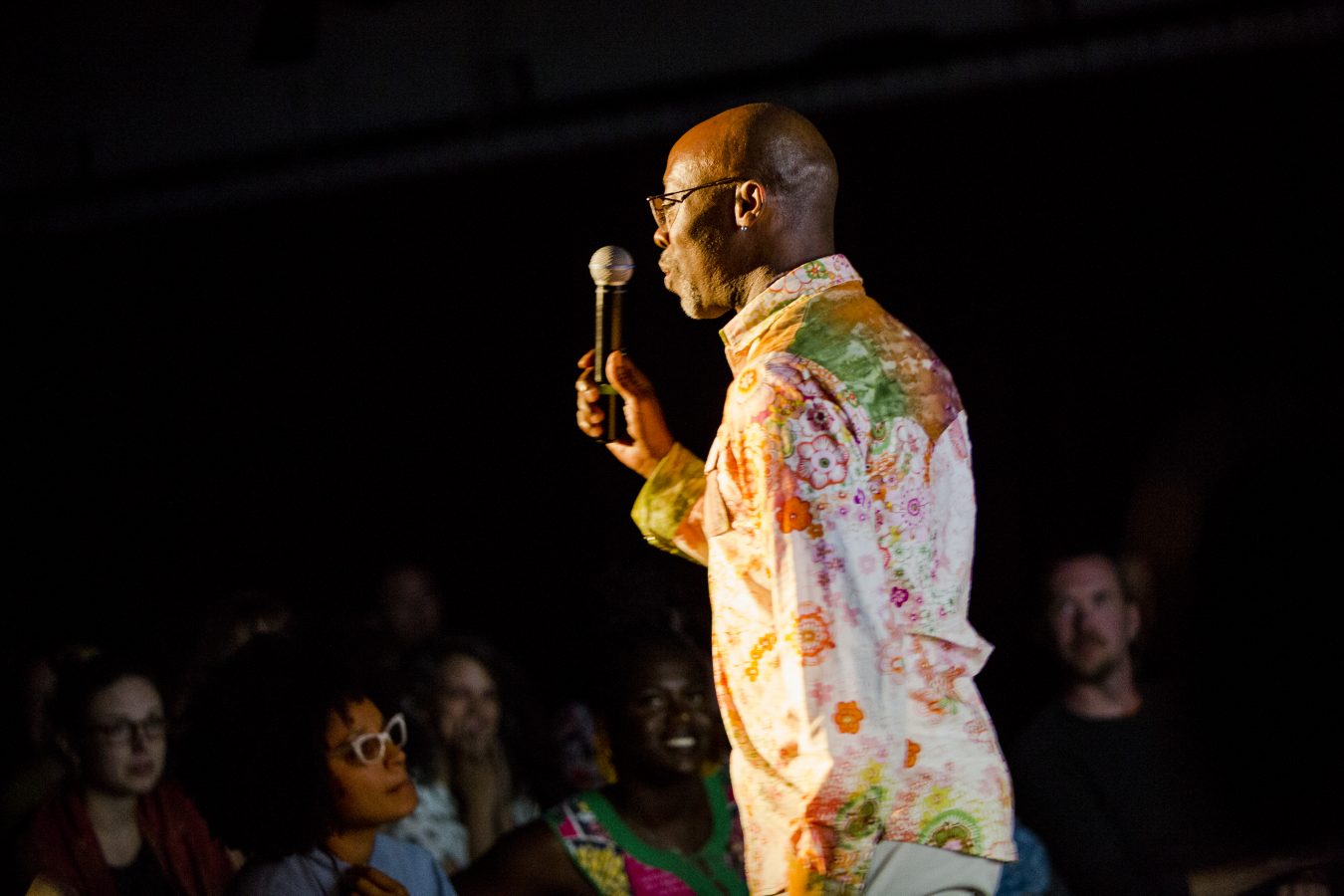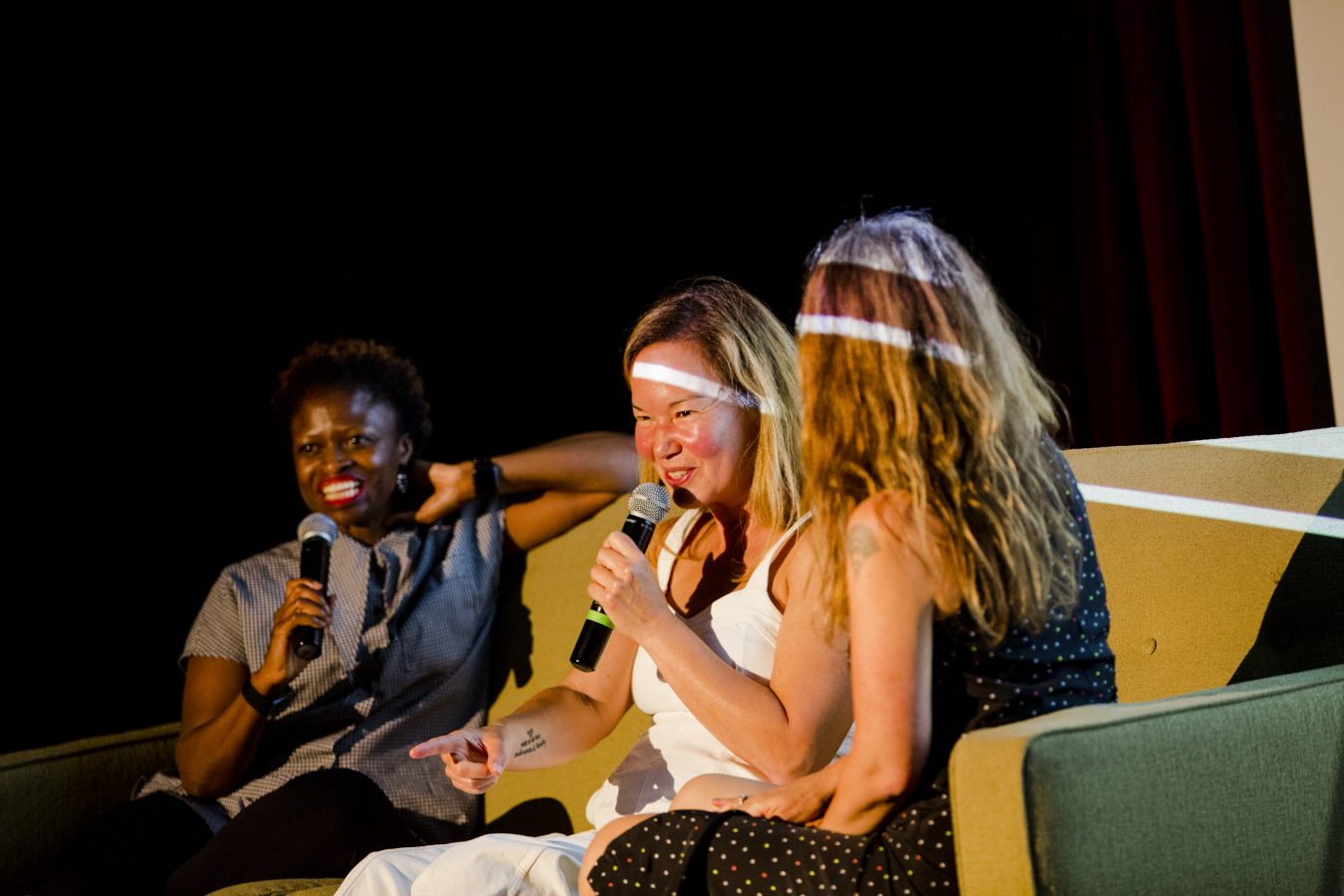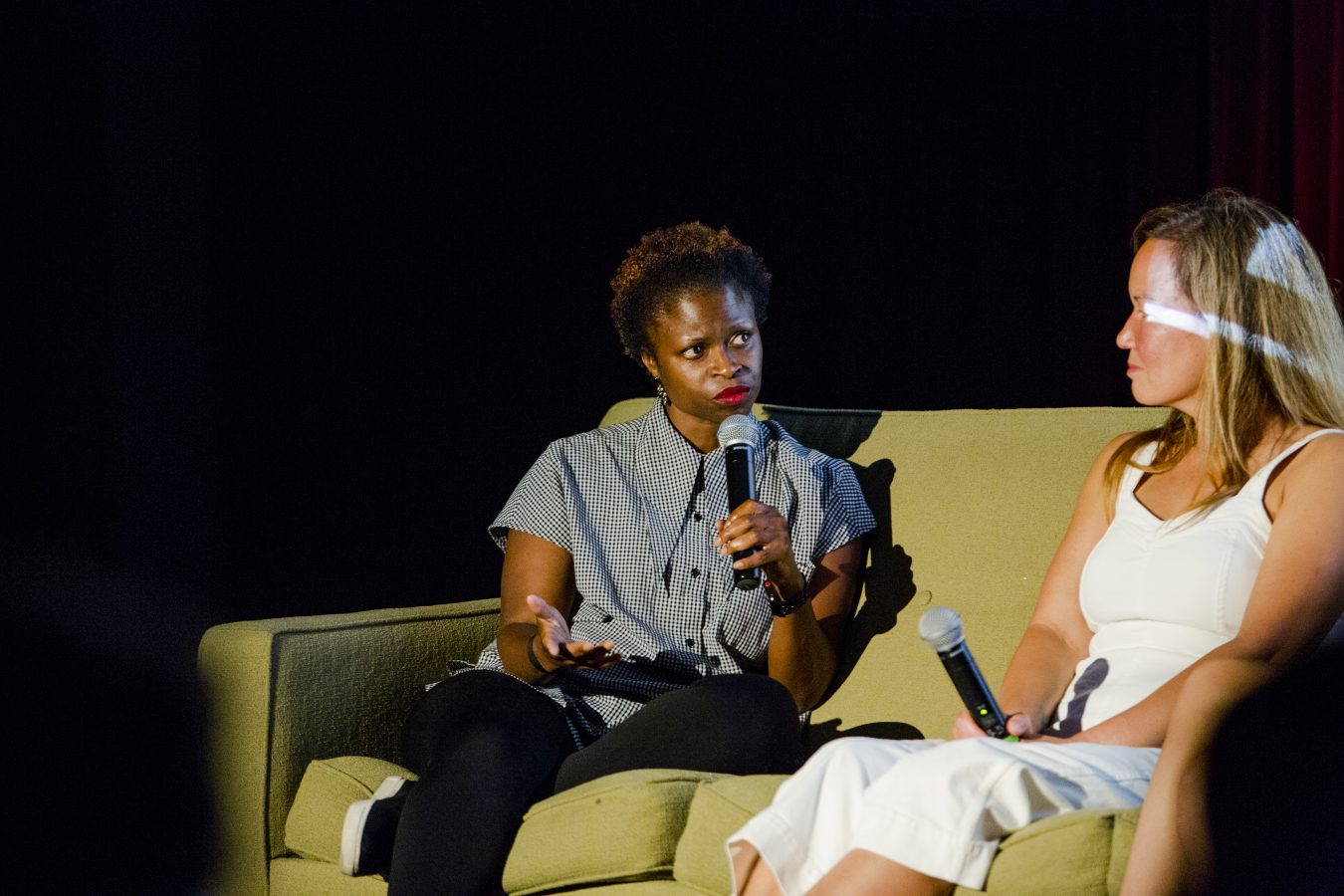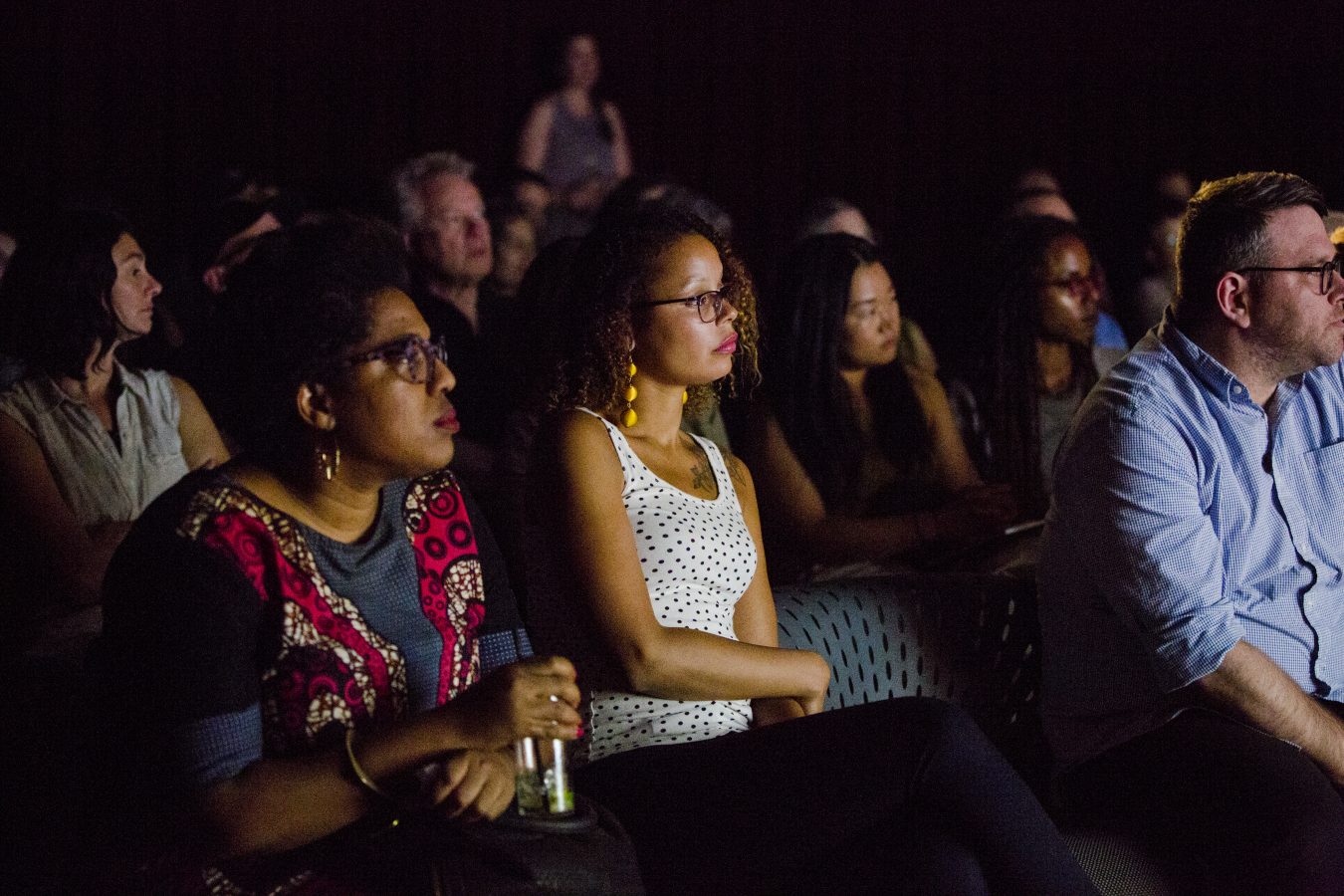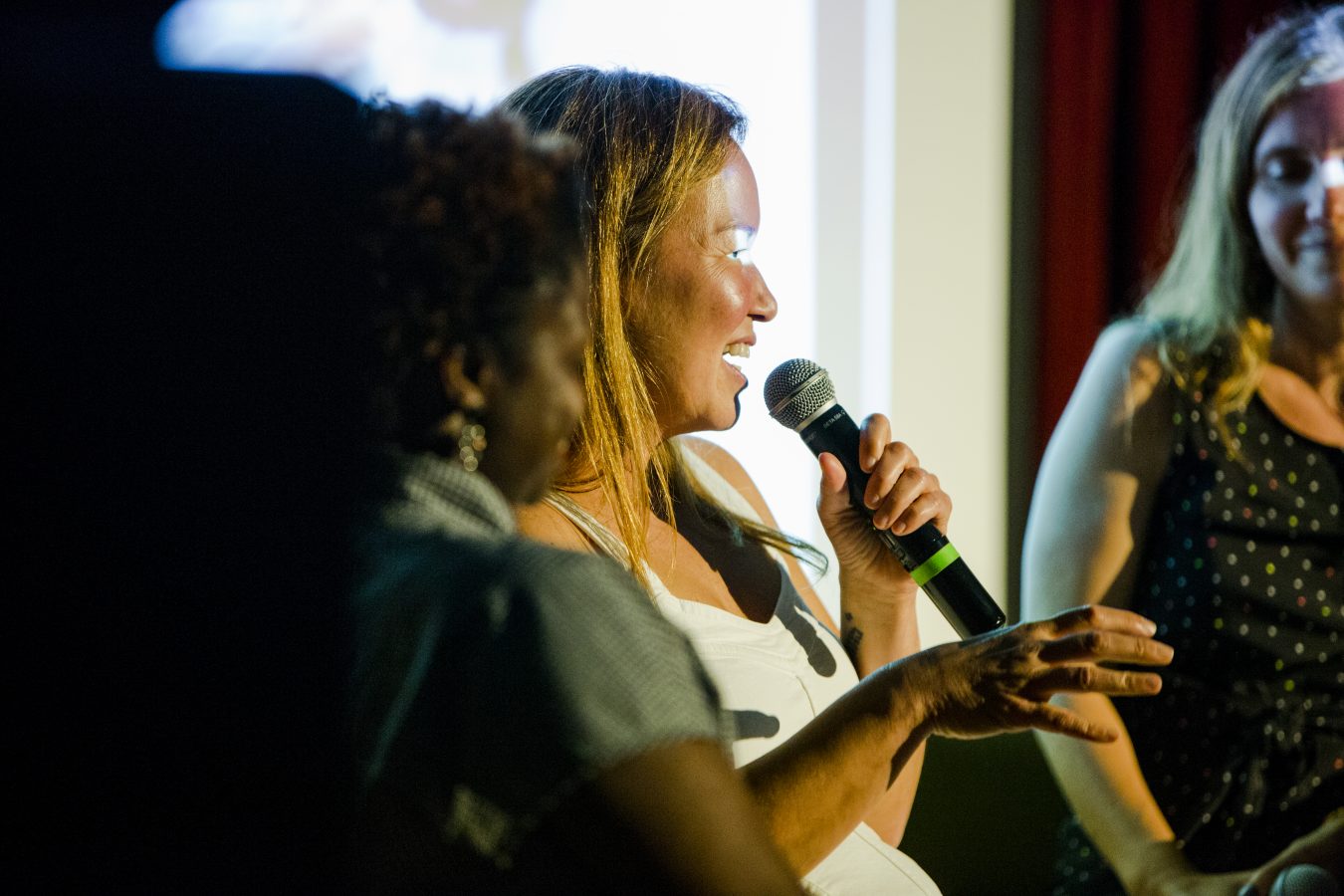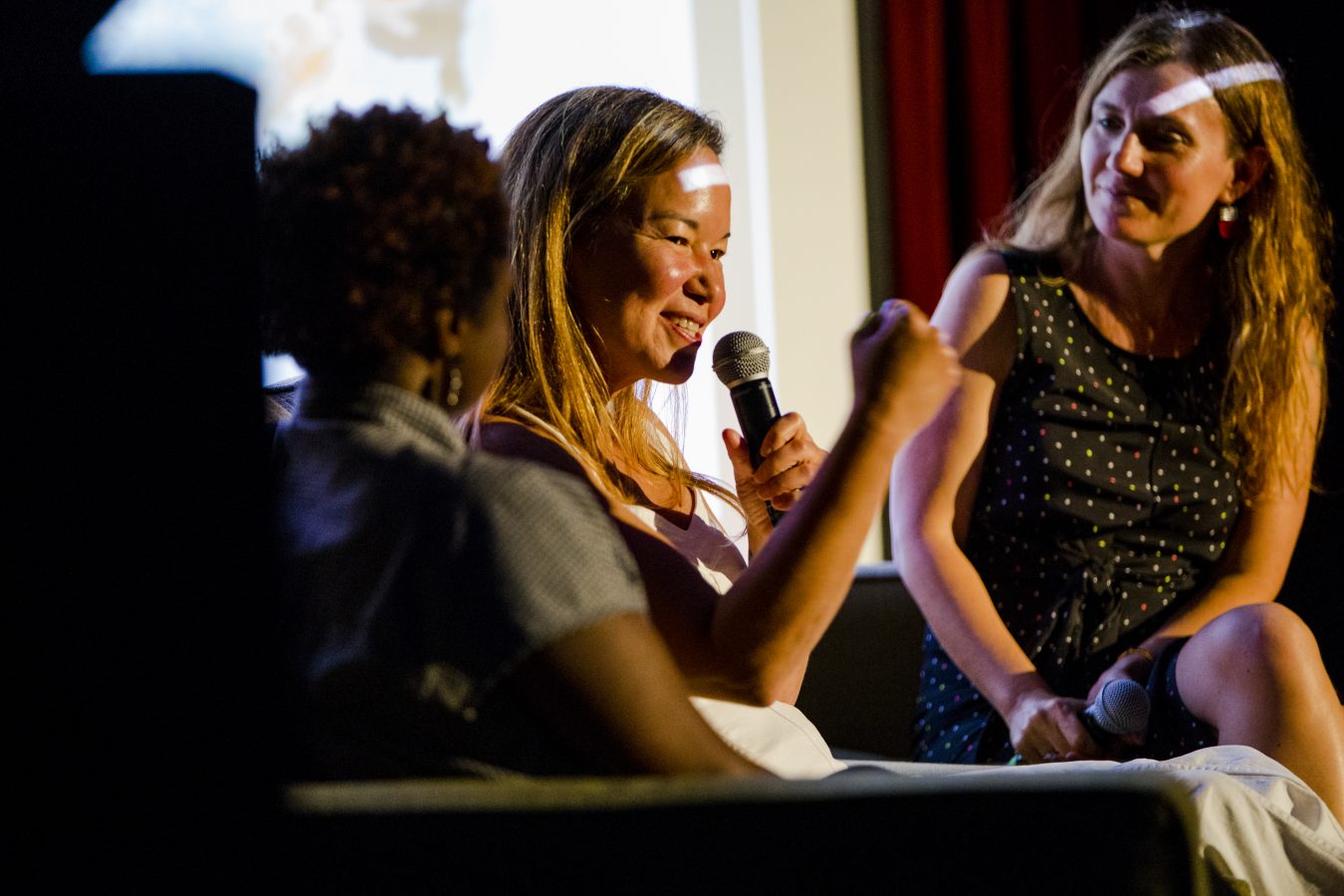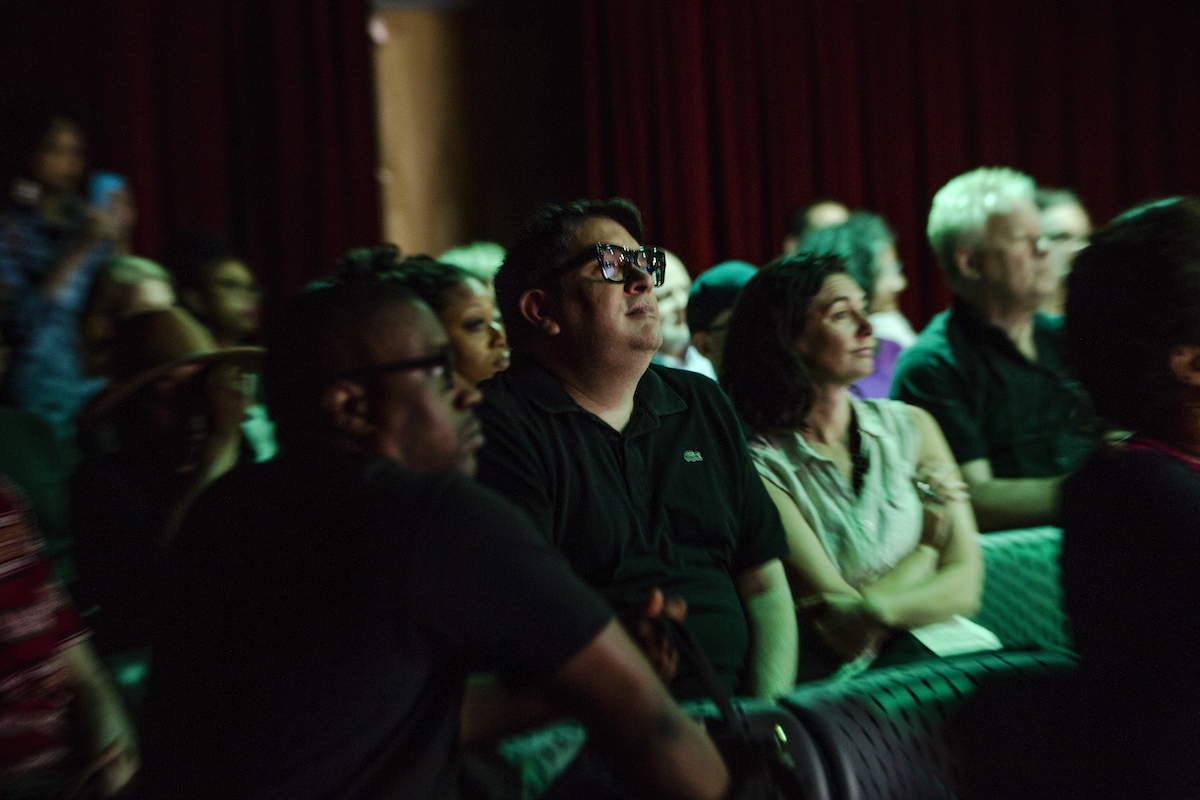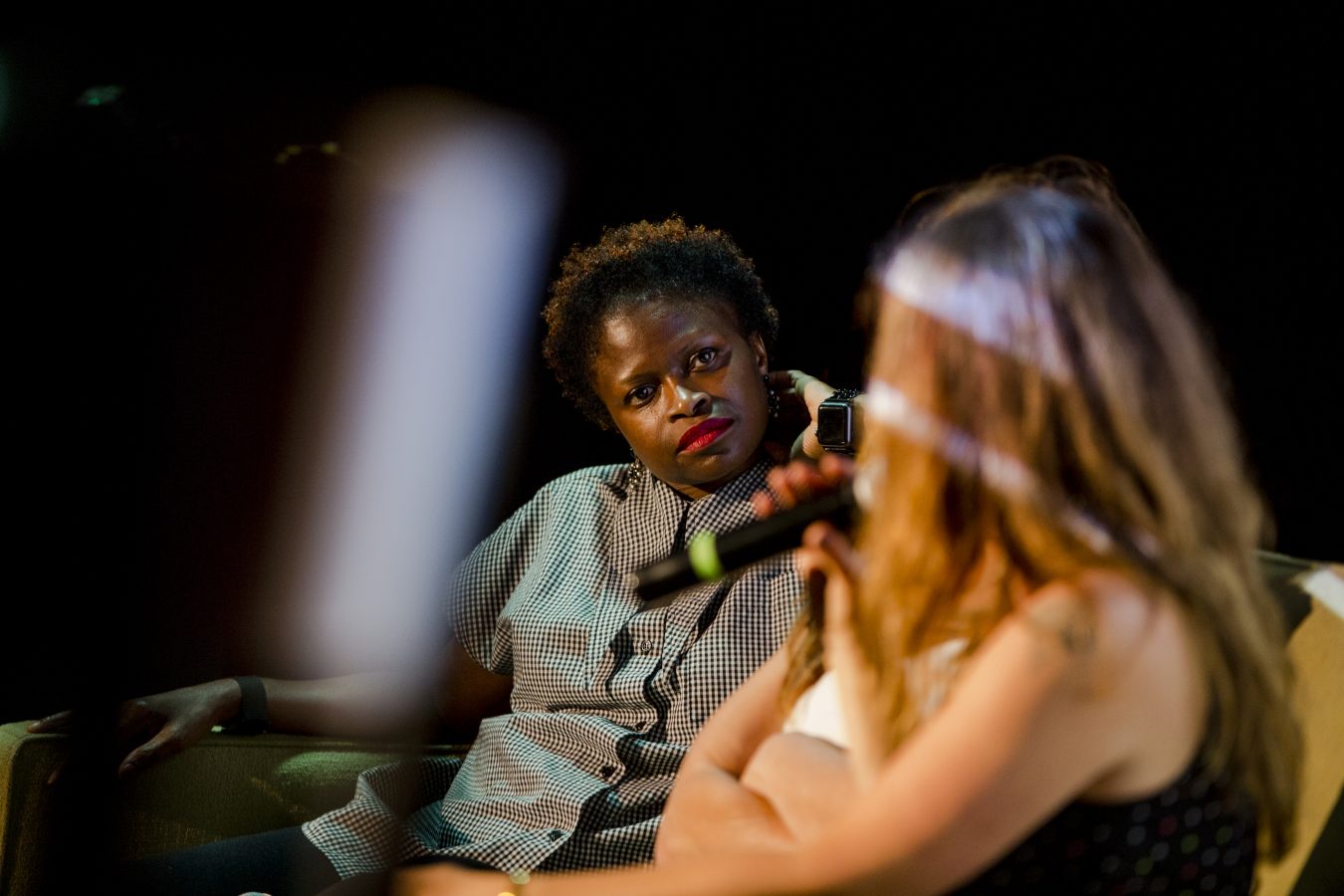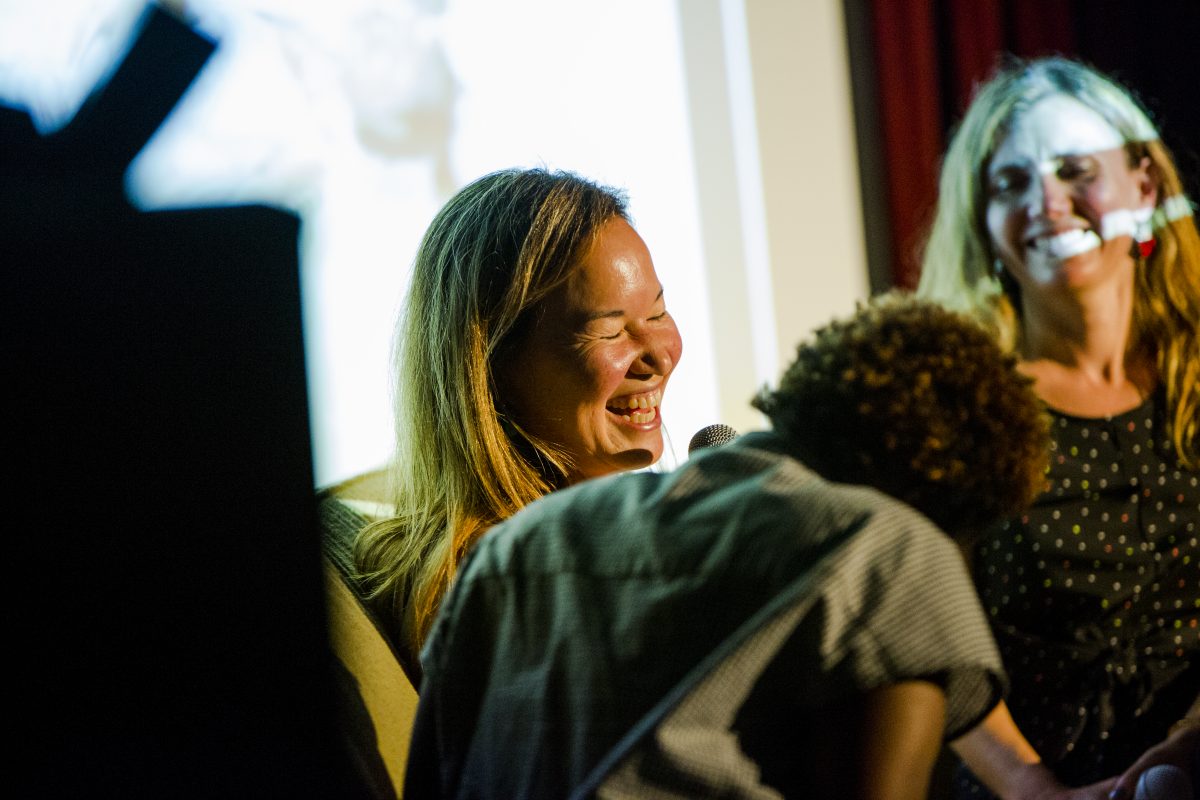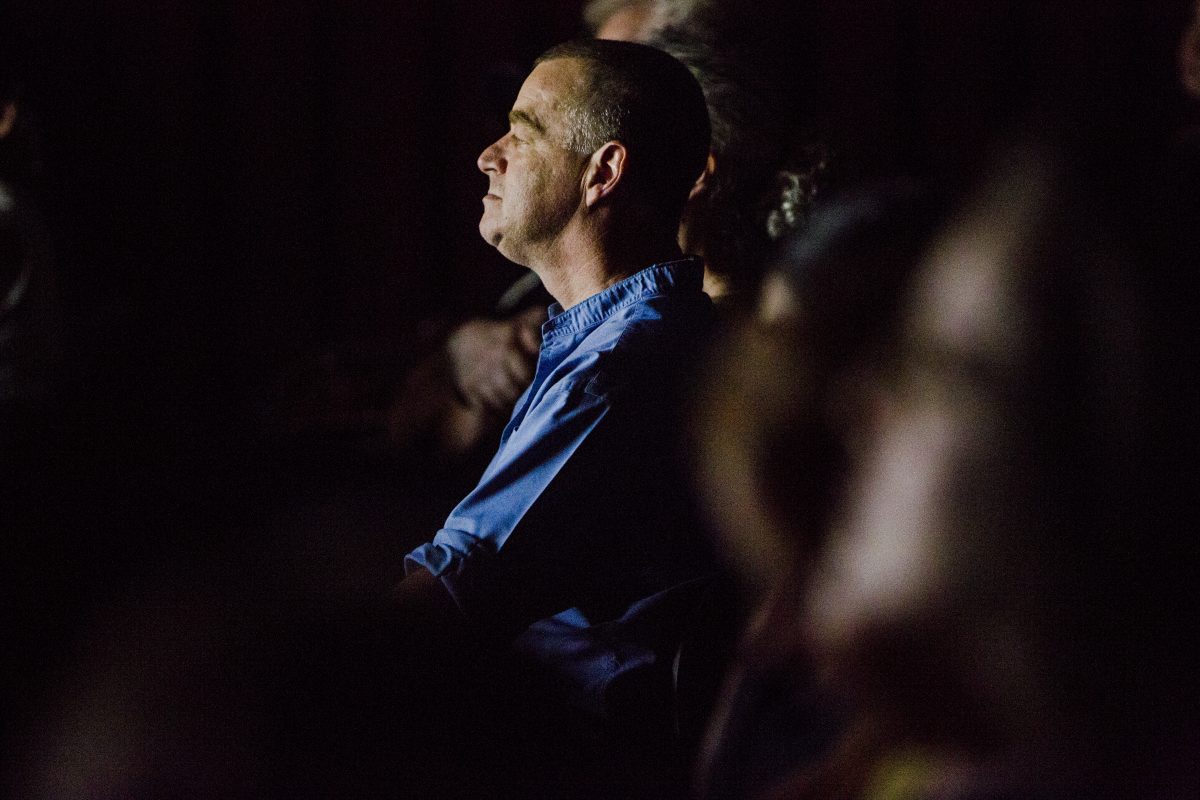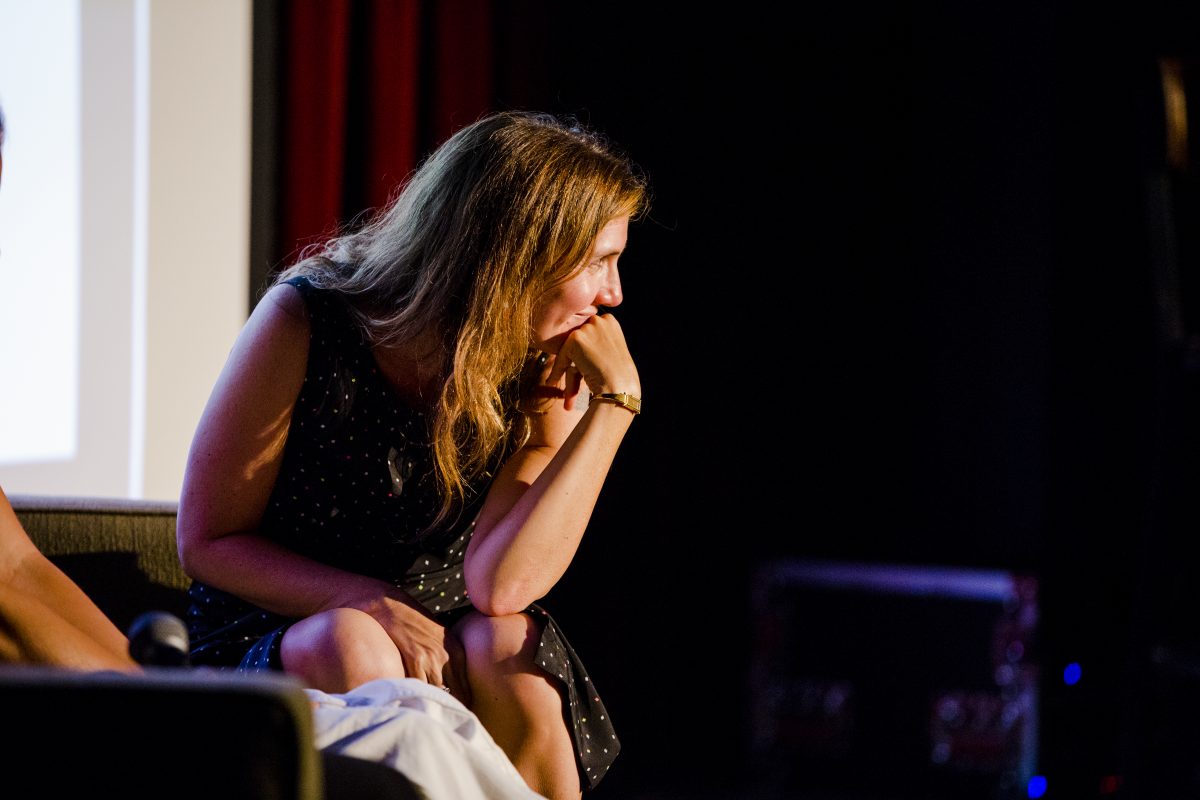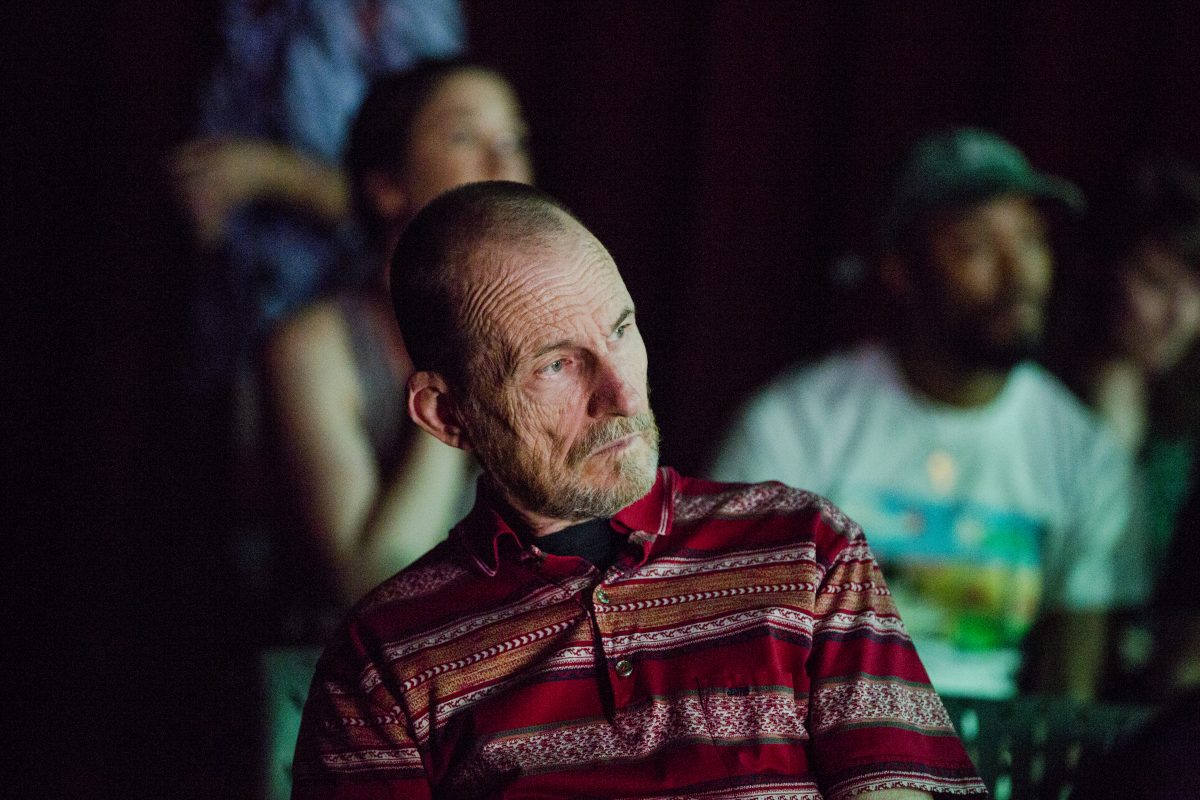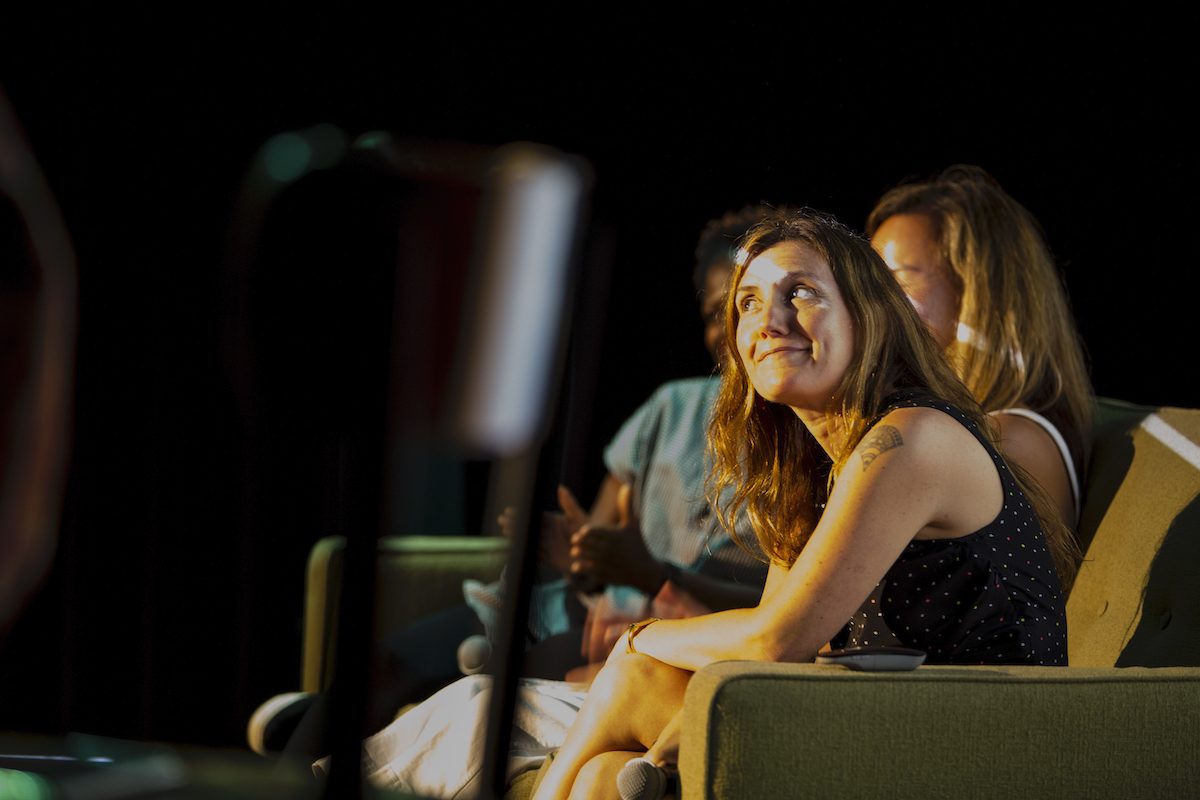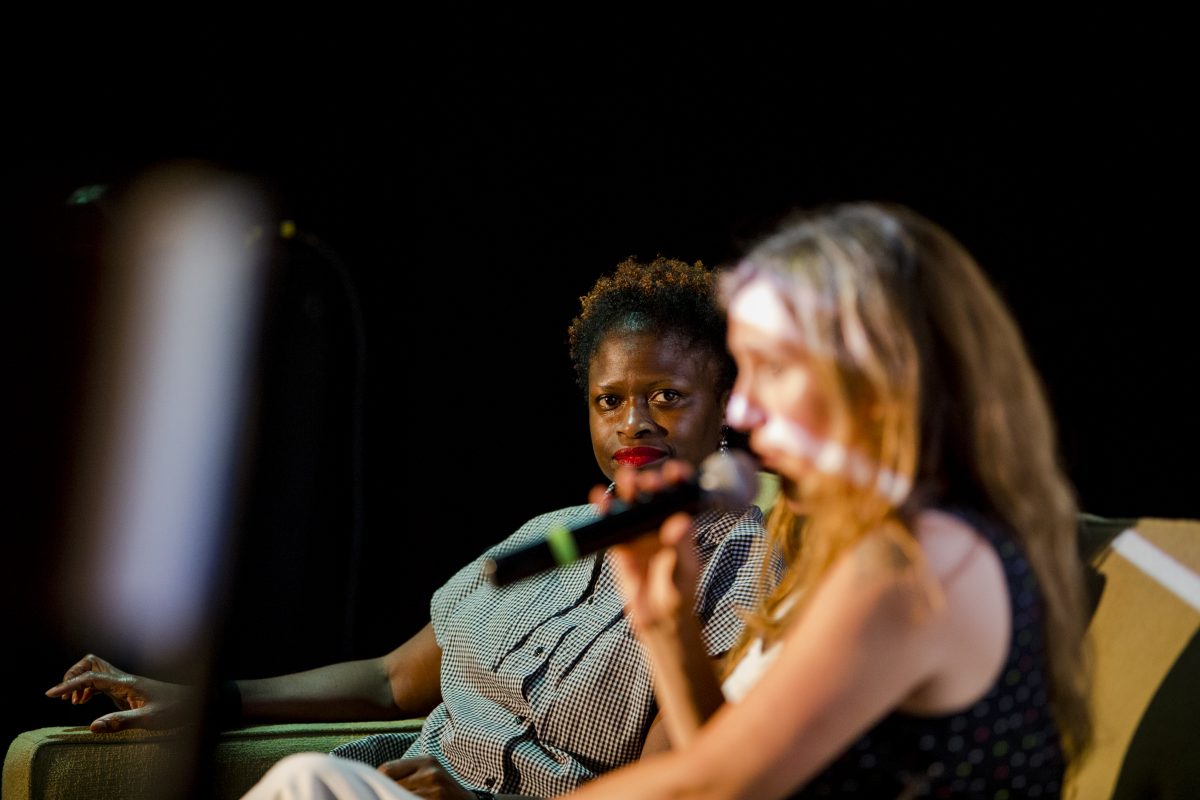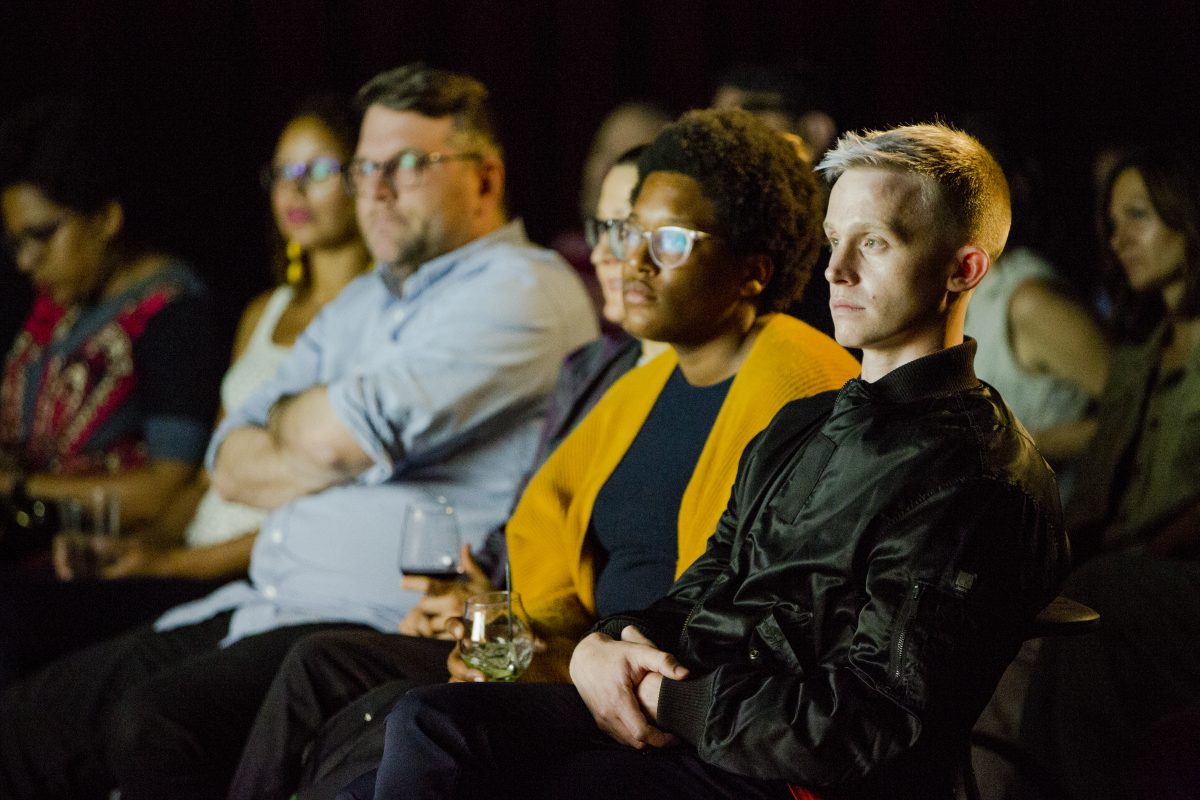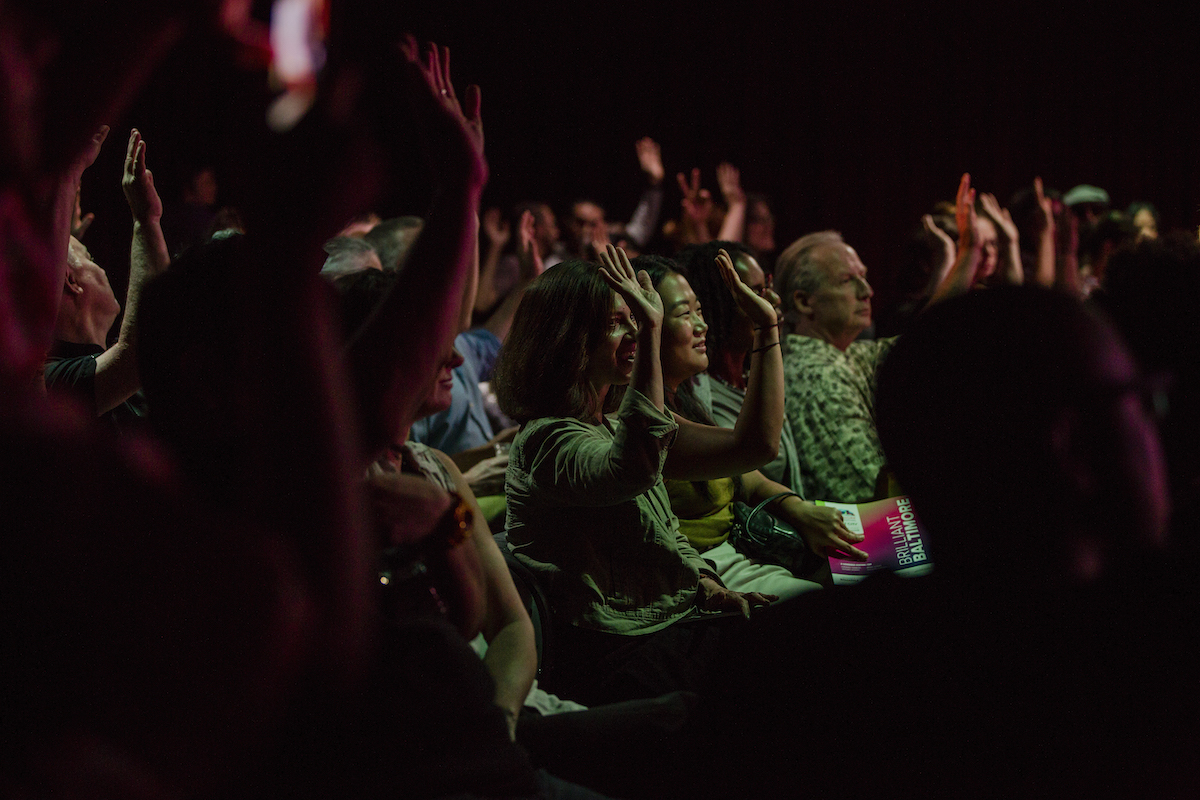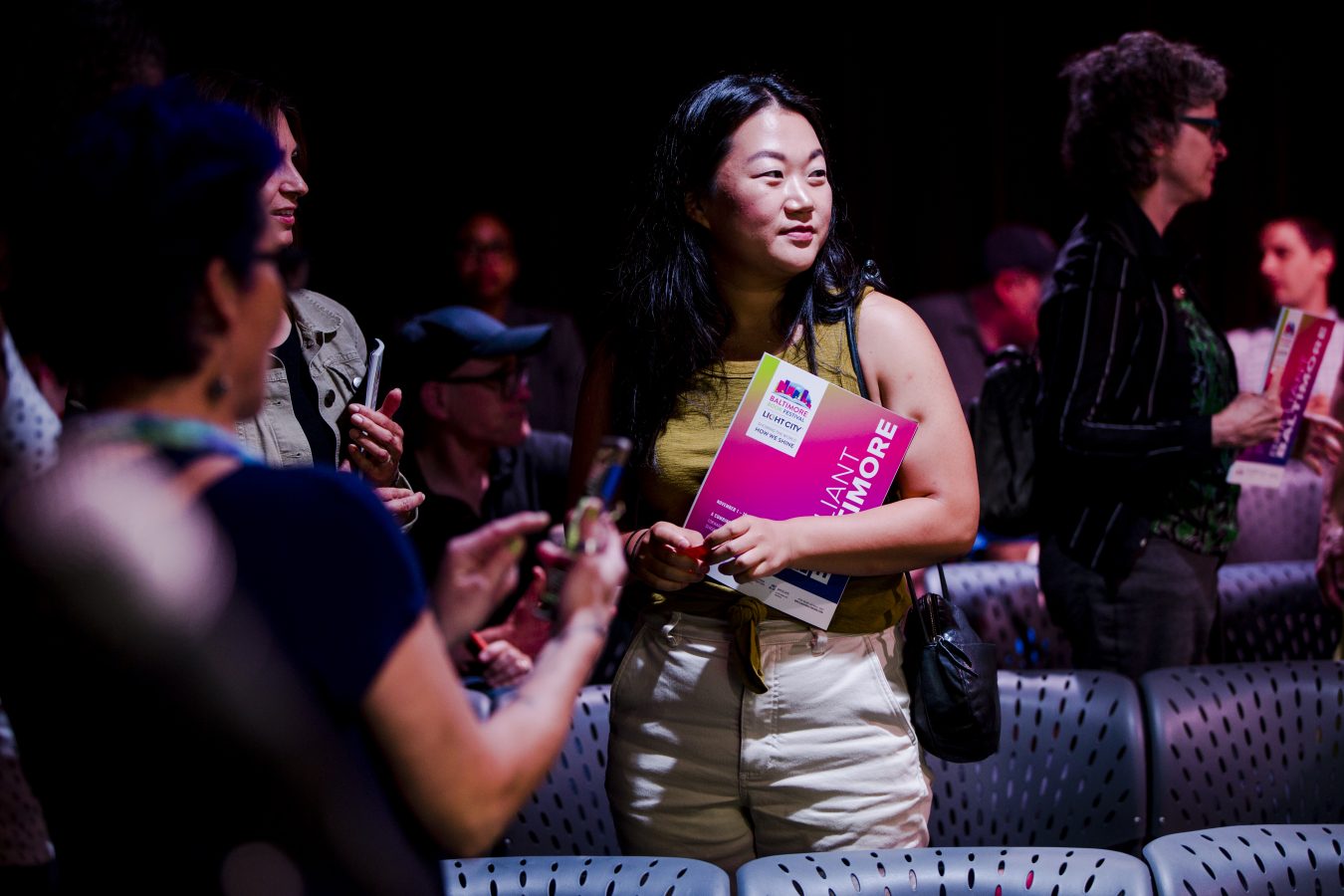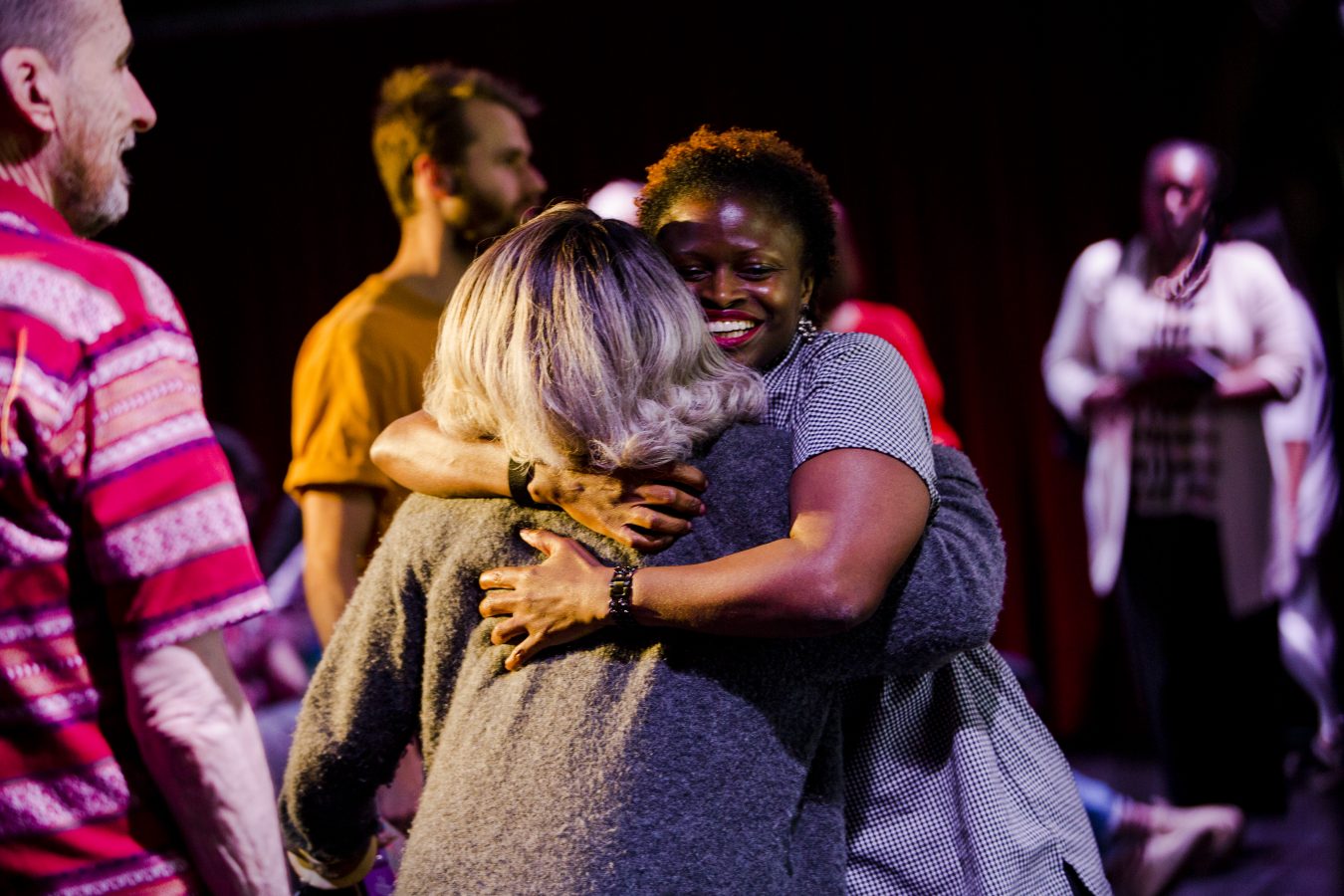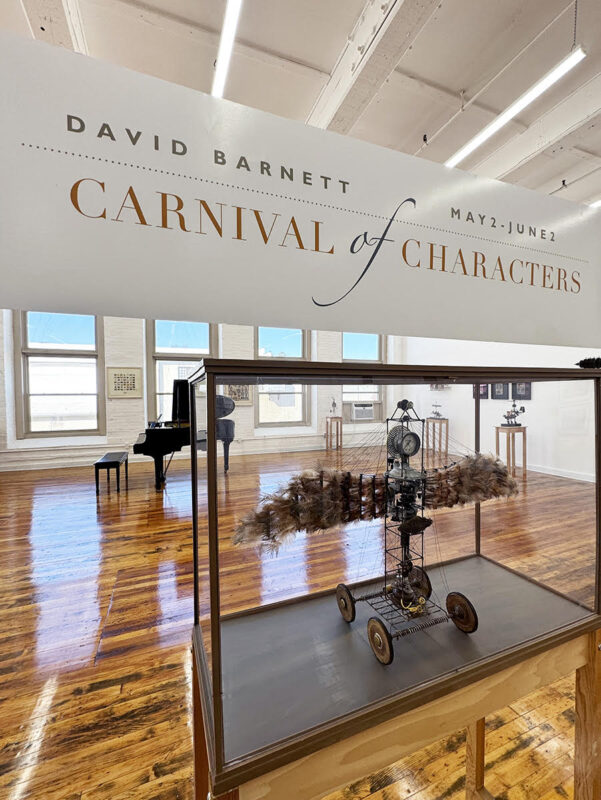Zoë: I’m just thinking about relationships in general. I mean, do you want to date a guy who only talks about one thing ever? Nope. But, on my personal collection…. when I sell something, I always turn around and buy the work of my peers or someone who is younger than me. I just picked up work from Kennedy Ringgold, a recent graduate of MICA’s undergraduate program. I’m really excited about having that work and I’m really excited to be supporting her and her thinking. And she’s a native of Baltimore.
Also, a really important collection that I had been fortunate to obtain is through a collecting collaboration with my colleague, Tim Doud. And so we have a relationship and the way that we have decided, we’ve decided to put our politics into practice because we like going to studios. We like talking to artists who are our peers and artists that we can’t ever imagine getting into their studios.
We recently acquired a work by Magnolia Laurie, and that was massive. Hey Magnolia. I bet you didn’t know that! So, so we’re really excited about that. And I think that that’s the way that you expand that is that we both have relationships with Magnolia, our friendships with her and, and part of it’s professional, part of is social, part of it is just being an artist in community, and it’s one way we’ve figured out how to support each other and other artists.
Cara: I segued into Philippa’s dinner slide. [image on screen of dinner party in Philippa’s apartment] It’s interesting to me that Philippa in, in talking about the bubble girl and the press that surrounded all of that, the idea that certain collectors are seen as valid and others are not. It’s crazy to me that there’s this hierarchy in the world of collecting. It seems so ridiculous and so pretentious and, and not all that helpful to anyone really, creating more boundaries in a space where we need less.
Philippa, I know you collect artists who are nationally and internationally known, as well as main who are based in the city where you live, in DC. Can you talk about that balance?
Philippa: I would say about half of it was made in DC. I’m a very emotional buyer, so I have strong feelings about each piece that I own.
Small story though about the hierarchy of art collecting. This one time I was in Los Angeles, and I actually went specifically to see one show from an artist whose work I own – remember Rozeal? Used to go by Iona Rozeal Brown? And it was these big beautiful works and there was this one piece that I really wanted and so I was talking to the gallery owner and she was hemming and hawing. I was like, that’s weird. Like I’m telling you, I want to buy that piece. I’m going to give you money. And she was like hemming and hawing about, oh, the long story short is the Rubells bought it. So I was like, oh of course, you know, I guess they had already been talking about it, but they hadn’t agreed to it yet.
Cara: So your interest and money were not considered as good as the Rubell’s, since they are internationally known collectors?
Philippa: Yeah. And she was holding it for them in the hopes that they would buy it and they ended up buying it. And the way I found out? I didn’t know that they had bought it until years later when the Rubells had a show at the women’s museum in DC and the piece was in that show. And I was like, dammit, that was the piece that, and that’s how I found out that, you know, obviously they’d want her piece to be in that collection and not in my collection even though she and I were actual friends.
Anyway, that’s just a little story. It illustrates this idea that there is a hierarchy to art collecting. And I mean, part of me, I’m like, fine, I get it. Like, I’m happy for Iona like that that happened for her, but also, but on a bigger scale, it goes back to this whole idea of the power imbalance between collector and artists and also between this kind of collector and that kind of collector and then the museum collection and all of that.
And that was a rant, but I’ve been thinking a lot lately about this. And we talked earlier about capitalism, and I think – if we want to solve this problem, we have to get rid of capitalism because that’s really what drives them.
Cara: Collecting and capitalism do go hand in hand, don’t they? And how to maintain the idea of purity that is ascribed to art and artists who are driven by ideas and not wealth?
Philippa: And that’s why I’m so struggling with this question. Maybe there’s no point in even like trying to solve the problem on this sort of individual level when there’s a big systemic problem that we have to solve that, that we can’t do anything about this until that gets fixed? So there is a political solution we may need to consider first. And I’m interested in having these political conversations.
Cara: Can you talk more about your Red and Blue dinner party series?
Philippa: Right after the 2016 presidential election when we were all, probably many in this room, were very upset by the results, I wanted to do something. My solution to being upset was to start inviting Trump voters over to my house for dinner. And so we’d gather around my dining table and I would make these dinners and I would try to make red and blue foods. There’s one meal where I had these blue tortilla chips and red salsa and blue cheese on this red pasta that I found that was like tinted with a beet juice and, and I made a blueberry and cherry crisp for dessert
Cara: I think that’s technically purple. [laughter]
Philippa: And then the dinners became more popular but I had a hard time finding Trump voters in DC, but I’d find a friend of a friend, or find people on Twitter. And I would meet them in a coffee shop in advance to make sure they were not a psycho killer, and they actually turned out to be okay, with maybe a crazy Twitter feed.
So then I kept doing this over and over. I’d invite people over for dinner, different conversation, relationship building, seeing each other eye to eye, like, you know, I was really thinking about humanizing. Also I have a very artful apartment. So I thought, well maybe that gives people something to think about other than attacking each other.
I did that over and over and I’m trying to not make this too long, but it culminated last fall in me organizing a small art show at a museum around the topic of Immigration and they asked me to organize a dinner. It was 50 people from across the political spectrum in the museum. So I invited people to come look at the art and experience whatever they experienced with that, and then we’d have a conversation and it was amazing.
And so I invited this man to come who was from this organization that does immigration policy and basically long story short is now they’re funding me to do art shows and dinners across America. So that’s what I’ve been doing for that.
Cara: Yeah, it’s an amazing thing.
Philippa: Now basically this whole year is about organizing all of that and it’s so awesome to go to these cities and talk to people who don’t think like us. And that’s in our own country. So like I’ve just realized like there’s like 10 countries in our one country and it’s fascinating. I’m not trying to change anybody’s mind, but I’m just trying to open up these kinds of spaces with art to at least get people to talk to each other. And I think that’s how the Pink Line Project evolved. It started out as a publication and event calendar. We hosted events, mostly based in DC. We would do some coverage and then it sort of evolved into events.
Cara: At a certain point you were like hosting a party for several hundred people every week or two. I mean I love hosting a lot of things, but that seems like a lot.
Philippa: Sometimes it would be several hundred people, but sometimes it would be five people. So I was just trying to think of every possible way that art could be used to bring people together because not everybody wants to come to it in a friend thousand people and, but also that’s a different kind of dialogue than you can have like this. So I was trying to figure out every possible way to, so that nobody would have an excuse. Like you there, you want to be around art or talking to people about art. Like there’s no excuse. There is a way for you!
Cara: Was it art and not music or dance or theater? Like why visual art?
Philippa: I don’t know because I like all the art forms, but contemporary visual art is my jam. I don’t know. That’s the thing that moves me the most and it’s a visceral thing. Why do you breathe? I just know. You just know that’s the thing for you. That’s what you want to focus on and be around.
Cara: And then in terms of art, are studio visits still a primary way that you engage with artists? Do you do discover work at exhibitions? Do you discover work when you’re being a juror or curator? How do you initially find artists?
Philippa: Today was so great. Does everybody know that we went to all these studios today? That was amazing. I hadn’t done that in a long time. So I appreciated you setting all of that up and you and Jeffrey picked the most amazing artists. And I’m not just saying that cause I’m in Baltimore, but like every single one was like better than the next. Not better, but wow, there’s usually one dud, but there wasn’t! And then I thought, maybe subconsciously you picked artists you knew I would be attracted to somehow, even though we don’t actually know each other that well.
Cara: Zoë also is someone who gives a very good studio visit. How do you do it? What are your strategies? I feel like the first studio visit I did with you, it was just very comfortable, very smooth. Having done this multiple times over the years, I wasn’t even aware that you had a very specific strategy.
You just always have it covered. So can you just talk about that? Because most artists don’t, and a lot of artists, the first thing they do when you come into their studio is they apologize. You have never done that. And none of the artists we visited today did that. One takeaway: Artists, never apologize, never, never, for your space. It doesn’t matter if your studio looks like a cyclone.
Zoë: My primary strategy is through storytelling, that’s how I end up navigating through the world. I connect with people over stories, so I enter into studio visits through telling stories. I think that that’s really the best way that I’ve found to explain what I’m doing. It just makes it more concrete, more personal. I also moved through my work thematically.
I don’t always do it chronology, because my practice is not just chronological and I revisit series often, but something that always comes back up were specific kinds of themes. Even the way that I lay work out in the studio, there’s always a relationship between the thing that is either catty-corner to it or right next to it. And so that’s been really important. That actually helps me tell a story a lot more easily.
And, I don’t apologize when people come into my studio cause my studio is typically a hot mess. If I spend time cleaning it up that’s pretty exciting for me cause I never get to see things that are not halfway covered with other stuff, or like today, with pieces on the floor.
Cara: Your studio is not a hot mess. Not right now. It’s actually pretty clean.
Philippa: It was good. One thing I noticed that has been consistent, is that she has multiple sizes of work in her studio. Some very large monumental pieces, larger than a person but not too many…
She has designated different spaces in the studio. Some small pieces are hung up, and some are in sort of in neat stacks and piles according type of work, body of work. She works in a series and there’s just a sense of order. I think people gravitate to the larger pieces first. But oftentimes someone who is a new collector is going to buy something small.
You also had sculpture in your studio and then you also had a tablet out with digital images and video so we could see like three or four of these large drawings, figure drawings that she had and then we could actually see what they look like installed in a museum. Because for me, that was transformative. Seeing them in the context, obviously we’re not going to go to the museum, we’re in your studio. But having that sort of sense to see the work as it is, but also to see in context I think is good.
Zoë: It’s like going to a store in a way… The best kinds of stores have a variety of things going on, things to touch and see, different sizes, and things to shuffle through. Those are really the best experiences, like old bookstores that have a big display but then lots of small things to sift through. So, when folks come to my studio I know that it’s not pleasurable to stand in one space, looking at one thing. It’s a different kind of experience when you can touch something or look through things at your own pace, consider a series and then relate it all back together. In my studio visits, I build in time for people not to talk, but just to look and ask questions.
Philippa: I want to underscore, too, this idea of storytelling, in the sense that when you’re telling stories, you’re building a relationship because you are sharing a part of yourself. There’s got to be a give and take because otherwise, you’re just doing the sales pitch and that doesn’t feel good. I’m pitched to a lot and as a person collecting, it’s always better to remind me of an experience I had and that’s is why and how your art connects to me.
As I mentioned earlier, I’m a very emotional art buyer. What does is mean to see something and it brings tears to your eyes? When that happens, I’ve got to have this. It’s not just visually, but sometimes because I talked to this person and the story reminds me of the time when something similar happened to me. That’s what I mean by emotional response.
Some collectors are more analytical. They care more about where you went to school and what residencies you’ve done. Those are the classic things. And if someone visiting your studio is like this, then that’s fine, you have to go with it. But I think it’s important to be open to the possibility that a lot of people are more like me. I’m not buying to invest. I’m not going to make gazillion dollars someday on my art collection. I’m buying it because I love it and I love the artist, not because it’s going to pay off one day and I better make sure the artist went to the right school. That’s just not my priority.
Cara: Do you see it as investing in an artist and their career?
Philippa: Yes, but it’s not an investment in my financial future at all. And I think collectors who are doing that at our level are really dumb actually. I think that’s a mistake because that’s like investing in the stock market or something to me. Who knows? You might as well just stick that money into your mattress.
